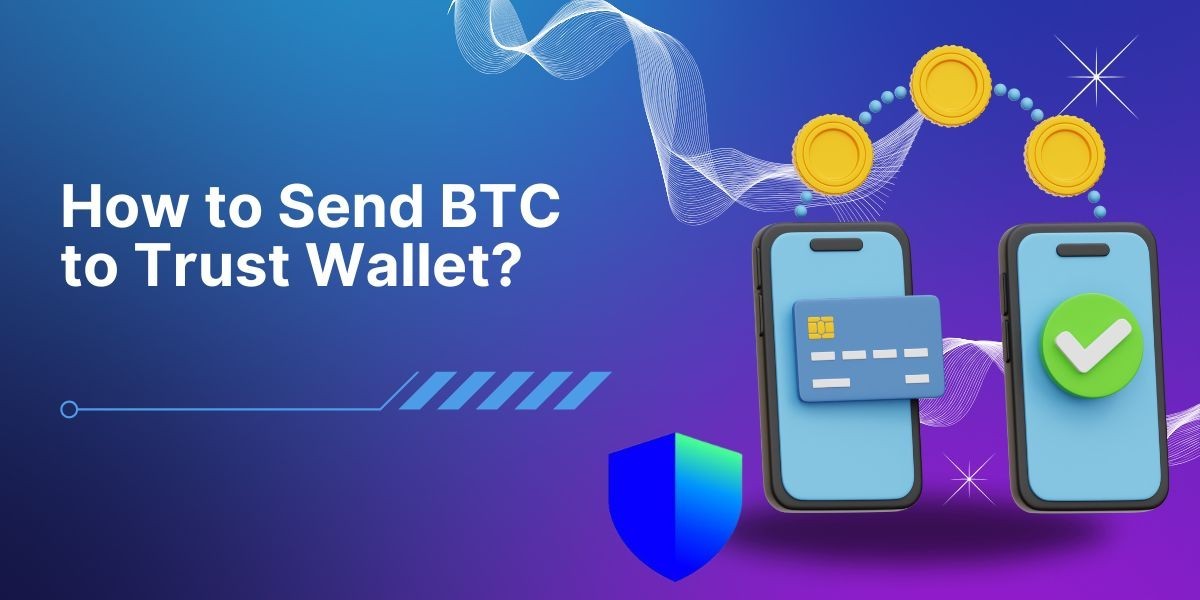Trust Wallet is one of the most popular mobile crypto wallets available today. It supports thousands of cryptocurrencies, including Bitcoin (BTC), and allows users to manage their digital assets conveniently and securely. If you're new to crypto or just want a clear, secure process for transferring your Bitcoin into Trust Wallet, this guide is for you.
In this article, we’ll walk you through the complete process of sending BTC to Trust Wallet, from finding your Bitcoin address to confirming the transaction on the blockchain.
Why Use Trust Wallet for Bitcoin?
Trust Wallet offers a combination of accessibility and control. With full custody over your private keys and support for multiple blockchains, Trust Wallet makes it easy to store, send, and receive Bitcoin from anywhere—all through a user-friendly mobile interface.
Before initiating a transfer, ensure you’ve downloaded the official Trust Wallet app from the Apple App Store or Google Play Store.
Step 1: Open Trust Wallet and Get Your BTC Address
Launch the Trust Wallet app.
Tap on “Bitcoin (BTC)” from the wallet list. If it’s not visible, tap the “+” icon to search and enable Bitcoin.
Tap “Receive” to display your BTC wallet address.
You’ll see a QR code and a string of letters and numbers—this is your BTC address.
Tap “Copy” to save the address to your clipboard or use the QR code when transferring from another wallet.
Make sure you’re using the native Bitcoin network address (not BEP2 or BEP20 versions, which are for Binance Smart Chain). Bitcoin addresses usually start with 1, 3, or bc1.
Step 2: Choose Your Sending Wallet
Now, decide which wallet or platform you’ll send BTC from. It could be:
A hardware wallet like Ledger or Keystone
A software wallet (e.g., Exodus, Electrum)
A centralized exchange like Binance, Coinbase, or Crypto.com
Each platform has a slightly different interface, but the sending process follows the same general pattern: select BTC, input the receiving address, choose the amount, and confirm the transaction.
Step 3: Paste the Address and Set the Amount
On your sending wallet:
Select Bitcoin as the asset to send.
Paste your Trust Wallet BTC address into the recipient field.
Enter the amount of BTC you wish to send.
Set the network fee (also known as gas fee). You may be offered the choice between slow, medium, or fast—choose based on your urgency and the current network traffic.
Double-check all information, especially the receiving address.
If you’re planning to transfer bitcoin from Keystone to Trust Wallet, follow Keystone’s air-gapped process. It typically involves scanning QR codes between your Keystone device and a companion app. This ensures that your private keys never touch the internet, adding a strong layer of protection to the transaction.
Step 4: Confirm and Send
Once you’ve reviewed the details and verified the address:
Hit Send or Confirm in your wallet or exchange.
The transaction will be broadcast to the Bitcoin network.
You’ll receive a transaction ID (TXID) which you can use to track your transfer on a Bitcoin block explorer such as blockstream.
Depending on the network traffic and the fee selected, it may take 10 minutes to an hour (or more) for the transaction to confirm fully.
Step 5: Check Your Balance in Trust Wallet
After a few confirmations, your BTC should appear in Trust Wallet.
Open the Trust Wallet app.
Navigate to the Bitcoin (BTC) section.
Your updated balance will reflect the recent deposit.
Tap the transaction to view its details—date, TXID, and amount received.
If it doesn’t show up right away, don’t panic. Sometimes it takes several minutes or a few confirmations before the wallet reflects the incoming funds.
Managing Other Cryptos Like ETH
While this guide focuses on Bitcoin, Trust Wallet also supports Ethereum and other assets. If you hold ETH in a hardware wallet, you may at some point need to withdraw ETH from Keystone hardware wallet to Trust Wallet for staking, swapping, or DeFi use. The process is similar—just make sure to use the Ethereum mainnet and the correct address format.
Need Help with a Delayed Transaction?
If you experience delays or issues while transferring crypto from a centralized exchange, it’s best to reach out to their support team. For instance, if you’re sending from Crypto.com and your funds haven’t arrived in Trust Wallet, try contacting their support.
You can call the crypto.com customer service number to inquire about the status of your BTC transaction, provide them with your TXID, and verify whether the transaction was processed correctly.
Final Tips for Secure BTC Transfers
Always double-check the recipient address. A single incorrect character can result in loss of funds.
Use QR code scanning where possible to avoid typing mistakes.
Test with a small amount if you’re using a new wallet or platform.
Avoid transferring during peak congestion to reduce fees and wait times.
Store your recovery phrases safely—this is essential for accessing your crypto in case of phone loss or app reinstallation.
Conclusion
Sending Bitcoin to Trust Wallet is a simple process when you follow the right steps and stay alert. Whether you're moving funds from a hardware wallet or a crypto exchange, using the correct BTC address, verifying your network, and tracking your transaction can make the experience secure and stress-free. Always prioritize safety, and enjoy the flexibility and convenience that Trust Wallet offers for your crypto management.








